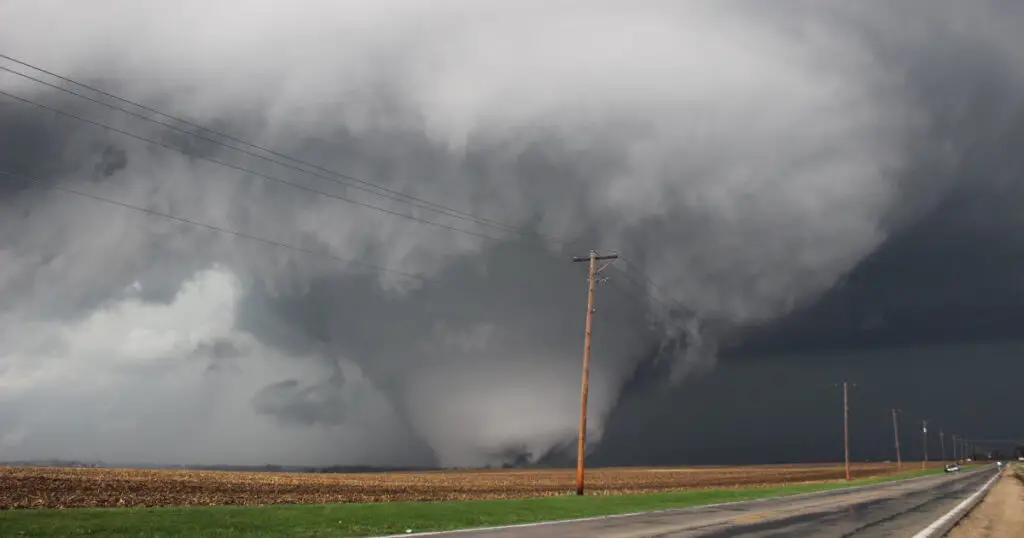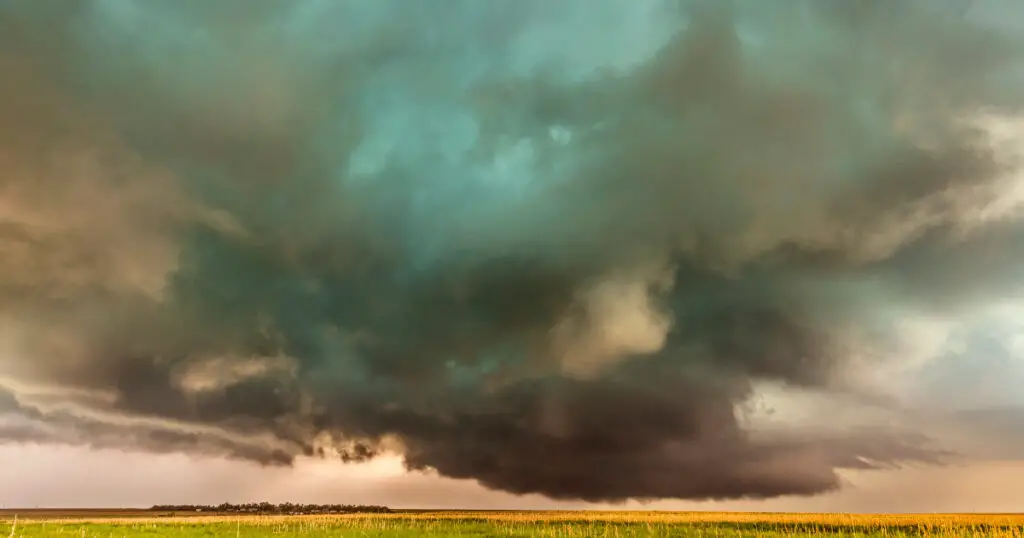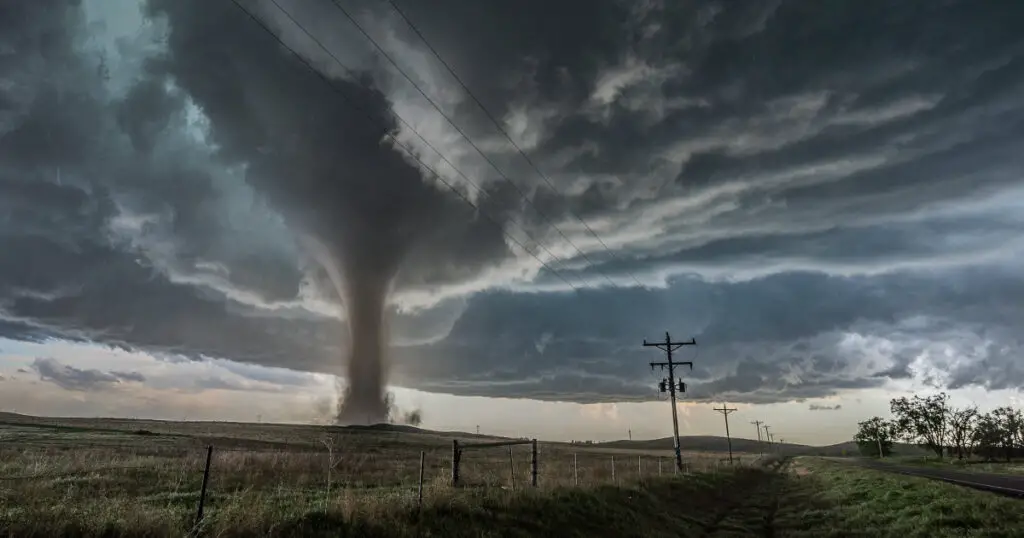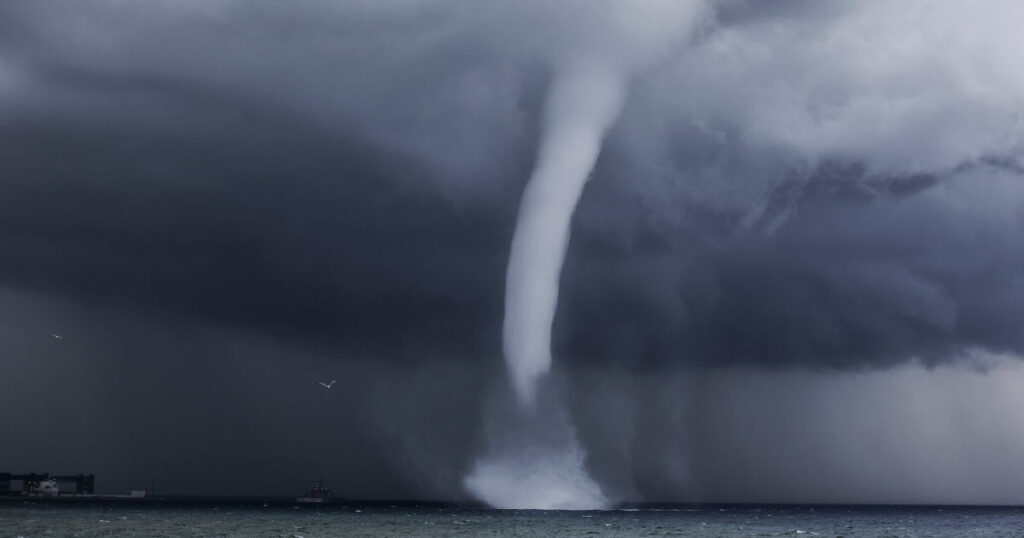While we’re all familiar with the kind of destruction tornadoes bring with them. We see them from afar on the horizon, connecting the skies and the earth. In many cases, they touch cumulonimbus clouds and are sometimes even the base of some clouds. Their distinctive funnel-shape can bring along wind speeds of up to 300mph. When they come, they bring about damage trails that can range anywhere between 1 mile to 50 miles. The wedge tornado is something unique, that’s different from other kinds of tornadoes?
In the United States, tornado season is a common occurrence between spring to early summer. Although that doesn’t mean that a tornado cannot form during other months.
In this article, we’ll go over the unique characteristics of the wedge tornado. We also cover how they’re formed and warning signs you can watch out for.
How Tornadoes Form
What’s also important to note is that tornadoes form over land. Tornadoes first need a thunderstorm to form. Storms occur when warm and humid air hits cold and dry air. What happens then is that the denser air, which is colder, pushes the warmer air.
At this time, the warm air will rise up to the skies, causing an updraft and creating a column of winds. The updraft rotates violently if winds are coming from different directions with differing speeds. The warm air speeds up the forming twister and the cold air gives it energy and forms it into the tornado shape.
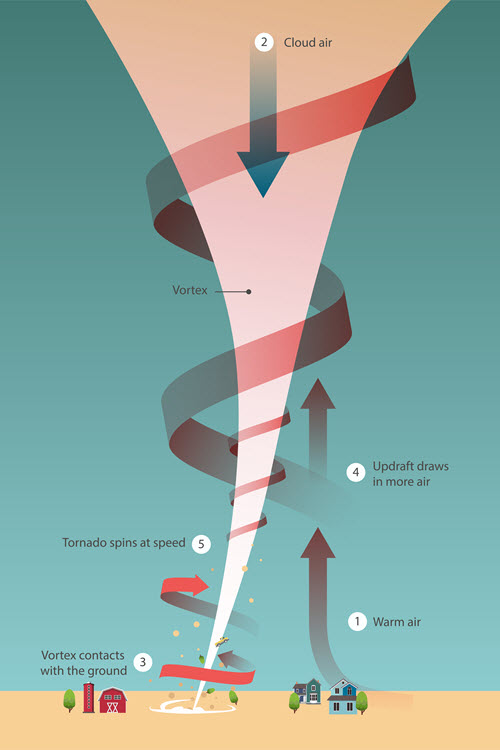
The specific type and shape of the tornado that is produced is determined by the unique meteorological conditions present.
Shapes of Tornadoes
While the shape of a tornado is recognizable, it comes in many forms.
- Rope Tornado: This is a slender and extremely common twister. They usually dissipate very quickly or get bigger and grow into other types of tornadoes. Visually, they resemble a string, which is how they get their name.
- Cone Tornado: This is the classic tornado everyone is familiar with. They have a conical shape and are wider than the rope tornado.
- Cylinder or Stovepipe: These tornadoes are uniform tubes or cylinders. They form at the thunderstorm’s base (up in the clouds). Its width is approximately the same at both its highest and lowest points.
- Satellite Tornadoes: These tornadoes spawn near a larger, primary tornado and orbit it. Either they dissipate soon or merge with the primary tornado eventually. These also occur in supercell thunderstorms.
- Non-Supercell Tornadoes: These twisters do not originate with an organized storm rotation. These originate due to air pressure differences in the dry air and are often much weaker than other twisters.
- Wedge Tornadoes: Wedge tornadoes are huge, broad, and tall tornadoes. While it’s not an official meteorological term, many tornado spotters use it as slang.
Wedge Tornadoes
If it isn’t a term defined officially by meteorological institutions, why is it used? Storm chasers are the ones using that term.
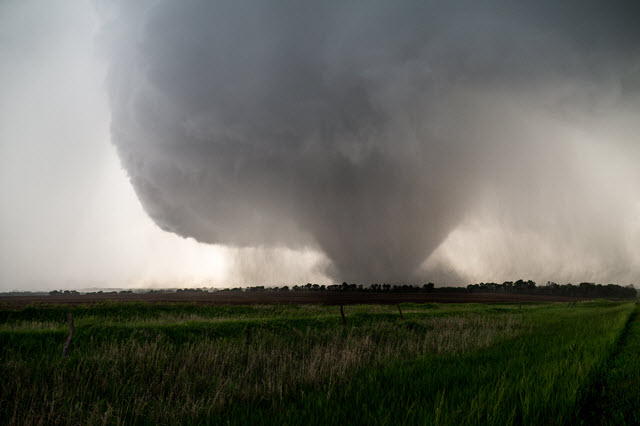
Wedge tornadoes earned that name due to their sheer size and appearance. Its width is usually larger than its height, and it is toweringly huge. Because wedge tornadoes can be so wide, they’re sometimes seen as a huge block of dark clouds.
Meteorologists suggest wedge tornadoes are at least half a mile wide or more. Normally, they cause a lot of damage since they’re classified at EF-3 or higher.
What does EF-3 signify?
The EF stands for Enhanced Fujita. The EF scale is a tornado rating and wind speed scale. It was officially put into use in February 2007. The ratings are based on wind speeds and also the kind of damage it can do.
The National Weather Service (NWS) the United States’ leading federal agency, is the only entity authorized to assign official tornado ratings. Ensure any important and reliable statistics you’re using come from them.
| Related Posts |
|---|
EF-3, according to the NWS, means the tornado hits speeds between 136-165mph. EF-4 has higher speeds and so on. The way they record is by looking at the highest speed the twister is clocking in at.
So How do you Tell if it is a Wedge Tornado?
For one, its distinct appearance is a good indicator. Since it’s not an official term, the shape is the biggest give away for its name.
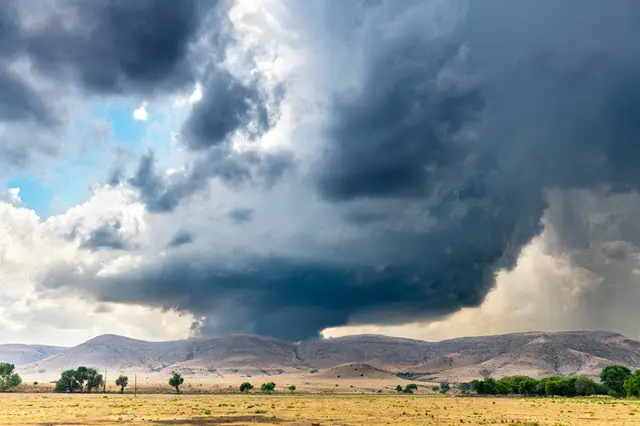
More practically, wedge tornadoes are wide. Oftentimes these storms are wider than their height from the ground to the cloud base. This differs from other types of tornadoes which can be seen as columns (see rope, cone, cylinder, etc. above).
Many storm observers, even the experienced ones, struggle to differentiate between low-hanging clouds and wedge tornadoes, simply because they look like a block of thick, dark clouds. The view often makes it difficult to differentiate the cloud base too.
Since it’s not an official term, use it sparingly. Not every massive tornado is a wedge tornado.
The Damage Caused by Wedge Tornadoes
Let’s look at some recorded wedge tornadoes and look at the impact it had wherever it went:
- In April 2020, an wedge tornado passed through San Jacinto and Polk County in Texas. It left 3 dead, 33 injured and caused USD $5 million worth of damages in the area. Homes were destroyed, many more lost their roofs and had trees uprooted.
- In April 2019, another EF-3 wedge tornado passed Blue, OK, killing 2 people, injuring 9, and caused property damage.
- In May 2019, an EF-4 wedge tornado came down on Lawrence and Linwood, KS. It destroyed many homes, and injured 18 people. Thankfully, no deaths.
- In November 2018, an EF-3 wedge tornado stormed through Taylorville, IL. 22 people were injured, with no deaths recorded. Structural damage hit many homes and businesses.
- In April-May of 2017, an EF4 wedge tornado touched down near Eustace, TX. 2 people were killed and 25 others were injured. It caused USD $1.2 million in damages.
Common Damage from Tornadoes
Tornadoes leave a lot of damage when they touch down. Wedge tornado most commonly uproot trees and fling them around. It also structurally damages buildings and knocks down electricity and phone poles.
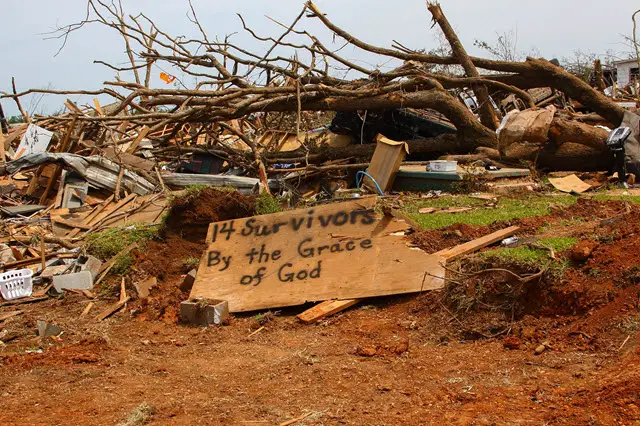
The sheer strength and speed of the tornado can pull up objects and fling them far off, including items as heavy as full oil tankers. Injury and death commonly result from these tornadoes. In 2020, 78 people in the United States reportedly died due to tornadoes.
Due to the speed at which wedge tornadoes can move around with, they cause a lot of damage. Their massive size also covers a larger area. However, not all large tornadoes are wedge tornadoes. Not all wedge tornadoes get an EF-3 rating or above either. In fact, an EF-1 wedge tornado occurred in 2015.
Summing Up Wedge Tornadoes
Wedge tornadoes are gigantic twisters that tower over the cities they strike. Their sheer size can be frightening. Remember, a wedge tornado is at least as wide as its height. Most of the time, it is wider. The term itself is unofficial but people use it to describe large, strong, and destructive tornadoes.
While there is a history of destructive wedge tornadoes, there are also supporting recordings of wedge tornadoes lower than the EF-3 rating. It is tricky to ascertain, but it is a good warning for when you see a large, dark cloud during tornado season, buckle up.
